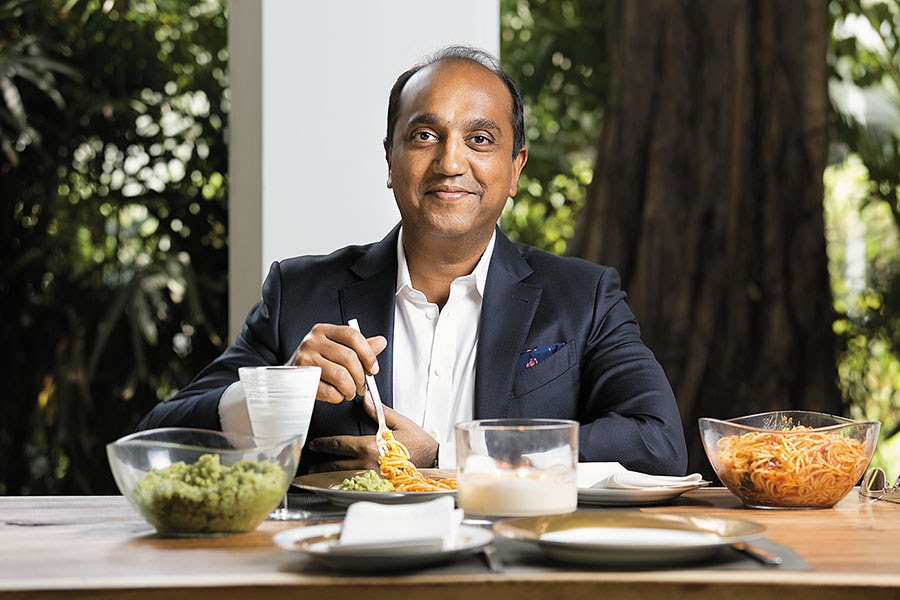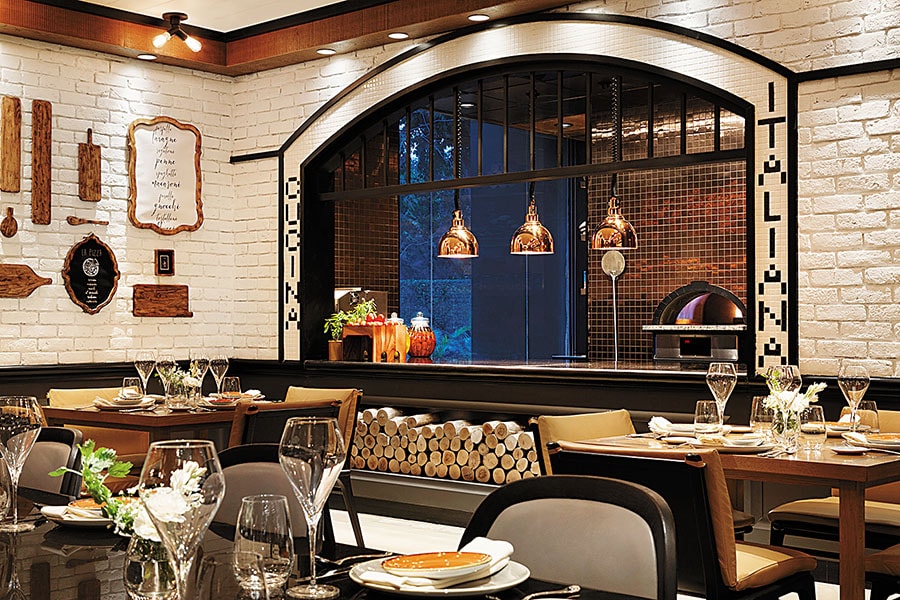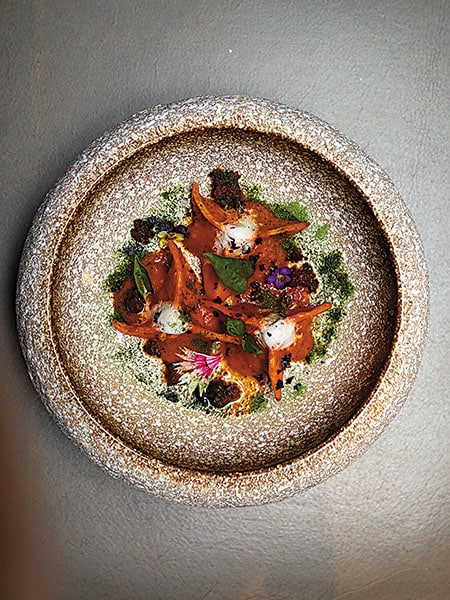
Heritage, hotels and hot tea with Apeejay's Karan Paul
Paul talks about his journey at the helm of the Apeejay Group, and the projects that bring his personal and business interests together
 Karan Paul is a global foodie who opted for appetisers, sea food and tea at Sorrento
Karan Paul is a global foodie who opted for appetisers, sea food and tea at SorrentoImage: Madhu Kapparath
He is a foodie, a global foodie,” messages Priya Paul to me, just as I am readying to meet her brother Karan Paul, chairman of the Apeejay Surrendra Group. Coming from her—the chairman of Apeejay Surrendra Park Hotels is a foodie herself, and had flown down Antonio Carluccio, the “godfather of Italian food”, to train chefs at Apeejay’s hotel chain The Park—this is solid recommendation. I keep this in mind as Paul and I sit down to lunch at Sorrento, an Italian restaurant at Shangri-La’s Eros Hotel, New Delhi.
It is a blistering summer day and Paul, who has just flown in from Kolkata, rightly chooses to order a cool and crisp New Zealand sauvignon blanc. “I’ll only have a glass if you do,” he adds, and we settle into the talk.
The Apeejay Surrendra Group is one of India’s oldest and largest privately owned family businesses. It operates across many sectors, but its key businesses are tea, hotels, shipping and real estate. Paul looks after the group’s financial planning and strategy and has been making interesting moves to consolidate and grow key businesses in niche ways.
But first, the food: We decide to order a couple of appetisers to share and then individual main courses. Sea food is an obvious preference to keep it all light, and so my guest chooses the pescatore salad with the freshest of squids and prawns, lightly drizzled with olive oil and lemon. He also calls for tuna tartare, raw and finely sliced, which is not typically Italian but fashionable these days in modern restaurants of all kinds, including Japanese ones. We don’t regret the choice, but the star of the appetisers is certainly the arancini—fried balls of risotto with parmesan and a hint of bacon—that I have ordered for comfort. Biting into these, we exchange memories of another star dish that most foodies in Delhi, Kolkata and Bengaluru will remember—a no-cheese thin crust pizza with Parma ham and caramalised onions. The Park used to specialise in this a few years ago.
 Sorrento, the Italian restaurant at Eros Hotel in New Delhi
Sorrento, the Italian restaurant at Eros Hotel in New Delhi
Talking about the hotel brand inevitably moves the conversation to Kolkata, home to both Paul as well as the iconic The Park on Park Street, which rung in 50 years last year. “It was tough to come back to Kolkata,” Paul remarks, as we begin tracing his journey helming the business. Paul had joined the Apeejay Surrendra Group in 1992 after his graduation from Brown University, where he studied politics and literature. Those must have been difficult years in the aftermath of the tragic death of his father at a young age and also because, as Paul explains, he had to come back to a city where the youth culture was conspicuous by its absence.
(This story appears in the 05 July, 2019 issue of Forbes India. To visit our Archives, click here.)


 Ravioli Caprese
Ravioli Caprese













